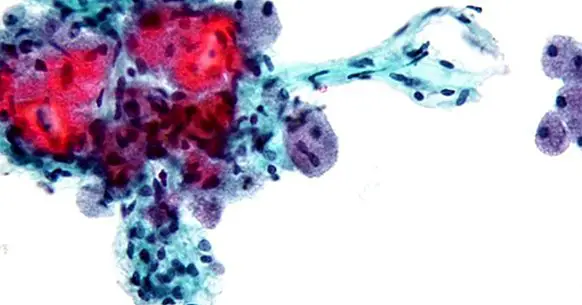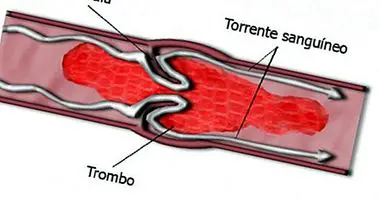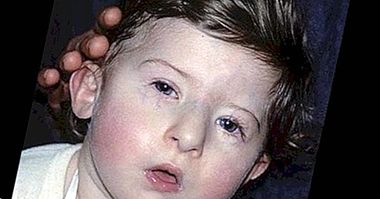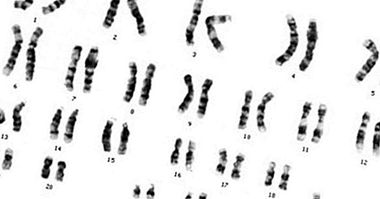Neoplasia: types, symptoms, causes and treatment
The concept of neoplasia may not be frequent to listen to in our daily life and in fact may seem unknown to many, but it refers to a very common reality that causes great concern in the population: we are talking about the formation of neoplasms, more known as tumors.
That is why the analysis and study of this type of alterations is very important, especially considering that cancer is still one of the main challenges of medicine and one of the most common causes of death. In this article we are going to analyze what is a neoplasia , its most usual classification and possible interventions that can be carried out to remove them.
- Related article: "Types of cancer: definition, risks and how they are classified"
The neoplasia
Neoplasm is understood as the formation or uncontrolled growth and some type of tissue of the organism that occurs abnormally, autonomously and without purpose, uncontrolled and irreversible. It occurs without taking into account the rest of tissues, being independent of these.
Such growth generates the presence of a mass, the neoplasm or tumor, which competes with normal tissues and cells. Although they sometimes appear due to a certain stimulation, the growth continues despite the cessation. They can appear in any organ and in practically any person, regardless of their age and condition.
In the human body we can find tissues that have a specific function within an organ and others that act rather as support in order to allow its functioning. In the neoplasm are the parenchyma, which are the set of cells with their own function , last are those that grow and reproduce, while the stroma or set of tissues that serve as a framework for this (mainly connective tissue and blood vessels) allow this tumor development to occur.
The existence of a neoplasm or tumor formation can be asymptomatic (especially if it is benign), but in others they usually generate physical, physiological or even behavioral alterations (for example in brain tumors) that may be related to their existence. The type of symptoms will vary according to the location and type of neoplasia of which you are speaking.
However, it should be borne in mind that although the presence of symptoms that may be possible indicators do not necessarily imply the existence of a neoplasm, but may be due to a wide variety of conditions (not all of them necessarily clinical), which in fact in many cases They are more likely.
We can find multiple types of neoplasms, depending on the type of tissue affected, the presence or absence of infiltration. However, the most common are those that take into account their degree of malignancy and / or the type of tissue that grows.
Types of neoplasms according to benignity or malignancy
Neoplasms can be cataloged and classified into different groups based on various criteria. However, the most common and known classification is that which takes into account the degree of malignancy and infiltration capacity in other areas, differentiating two large groups of neoplasms.
Benign neoplasms
It is considered benign all that regular, localized neoplasm that is self-limiting or encapsulates, its behavior being non-infiltrative behavior (that is, it does not invade the surrounding tissue). Its growth is relatively slow, being the cells that are part of the tumor similar to those of the surrounding tissues and being clearly differentiated. The presence of some kind of benign tumor is quite common throughout life, being frequent polyps, cysts, adenomas, papillomas or fibroids among many others.
In general, benign neoplasms are cellular formations that do not necessarily cause serious alterations in the patient, unless their presence generates clamping or compressions of relevant blood vessels or organs (especially when they occur in a closed space such as the brain, inside the brain). skull) or end up becoming malignant.
Malignant neoplasms
Malignant neoplasms are those in which infiltrative tumors form, which tend to expand and invade the structures around them and are not limited. These are rapid growths that affect the surrounding tissues and invade them, not self-limiting and producing metastasis . Cell differentiation is lost, the limits of the tumor mass are not very delimited. As the fabric evolves, it looks less like the original structure.
We are talking about what is commonly known as cancer. If left untreated it ends up causing the patient's death in periods of time that can vary greatly, often causing bleeding and tissue death.It can generate recurrences, that is to say that if they are not completely eliminated they can grow again despite being extirpated. The degree of infiltration, as well as its speed of expansion and growth and the extent and degree of differentiation of their cells can be very variable. In this sense we can find various subclassifications (which you can observe in this article).
Classification according to neoplastic tissue
Another possible classification is according to the type of tissue in which the neoplasm appears. In this sense we can find a large number of categories, being able to find both benign and malignant neoplasms in practically all types. The following groups stand out.
1. Tumors of connective tissue
This type of tumors occurs in adipose tissue, cartilage, bone or fibrous tissue. For example, fibroma or osteosarcoma .
2. Tumors derived from endothelium
These are tumors or neoplasms that occur in the blood vessels, lymphatics or in the meninges . Thus, the meningioma or the hemangioma are examples.
3. Tumors derived from blood cells
There is an uncontrolled proliferation of blood, lymphatic or immune system cells. The best known type is leukemia . In this case they are all evil
- Related article: "Blood types: characteristics and compositions"
4. Tumors derived from epithelial cells
This type of neoplasia occurs either in the skin or in the epithelial tissue existing in different organs, glands and ducts. Carcinomas (including the well-known melanoma) or papillomas are frequently known by the population.
Causes
The reasons why certain cells begin to multiply uncontrollably are not known exactly. And in fact there is no single cause for the appearance of a neoplasm, but they have a multifactorial origin.
Aspects such as the presence of certain disorders or diseases , diet, the incorporation of certain chemical substances by the body, sedentary life, exposure to radiation or genetic predisposition are variables that have been linked to their appearance.
They also influence experiences, stress coping styles (some predispose to cancer, such as those that repress negative emotions and are inhibited) or personality.
However, it must be borne in mind that none of these factors explains the appearance of the cancer itself. For example Although there may be a genetic predisposition, most of them occur sporadically .
Possible treatments
There are a large number of possible treatments to be applied in case of neoplasia, being generally the extirpation of the tumor and / or the application of chemo or radiotherapy to destroy the tumor or the remains that may remain of it.
A large part of the benign neoplasms are surgically removed, unless their level of risk is low and the extraction itself may cause other problems (for example, causing vision damage in an ocular tumor). Although the detected neoplasm is benign, it will always be necessary to undergo periodic medical check-ups in order to prevent it from becoming malignant or to grow in excess causing different types of discomfort and problems.
With regard to malignant neoplasms or cancers, the procedure is similar. Surgery is usually applied sooner or later, as well as chemotherapy and / or radiotherapy in order to reduce and destroy the tumor or possible tumor remnants. The use of immunotherapy or hormone therapy is not uncommon. In some cases it may be necessary to ablate parts of the body with high risk of infiltration, as in breast cancer with mastectomy. Unfortunately, depending on the degree of expansion and the stage in which the cancer is present, the treatment may not serve to cure the patient, only slowing down its progress or even offering palliative treatments.
It is also recommended, at least when we speak of a cancer or a benign neoplasm but that leaves sequels (such as one that occurs in the brain), act on a psychological level. We must bear in mind that the diagnosis of a neoplasm is a serious blow to the recipient and to their environment.
The subject can become isolated or isolated, to assume a passive attitude, suffer anxiety and depression or deny their status and not want to be treated, among other possibilities. In this way the use of various types of psychological therapy can serve to facilitate the assignment to treatment, improve the patient's physical and mental state , prevent and reduce the effects of possible depressive and anxious symptoms, promote emotional expression and activity or even desensitize the subject of the secondary symptoms of it (it is common that nausea and vomiting persist after chemotherapy due to the association of food with the discomfort generated by the treatment).
The psychological treatment
In case of cancer type of psychological therapy will depend on the stage of the disease and the characteristics of the patient.For example, counseling is often offered and information and coping strategies are offered. It also seeks to help improve the feeling of control over symptoms and one's own physical condition with resources such as relaxation techniques, systematic desensitization, visualization therapy or adjuvant psychological therapy (seeks the patient to have an active coping and improve their sensation of control to improve your immune response).
It is also essential psychoeducation for the subject with cancer and its environment . The use of expressive therapies to reflect their feelings and fears and cognitive restructuring to fight against irrational or harmful beliefs can also be great.



















